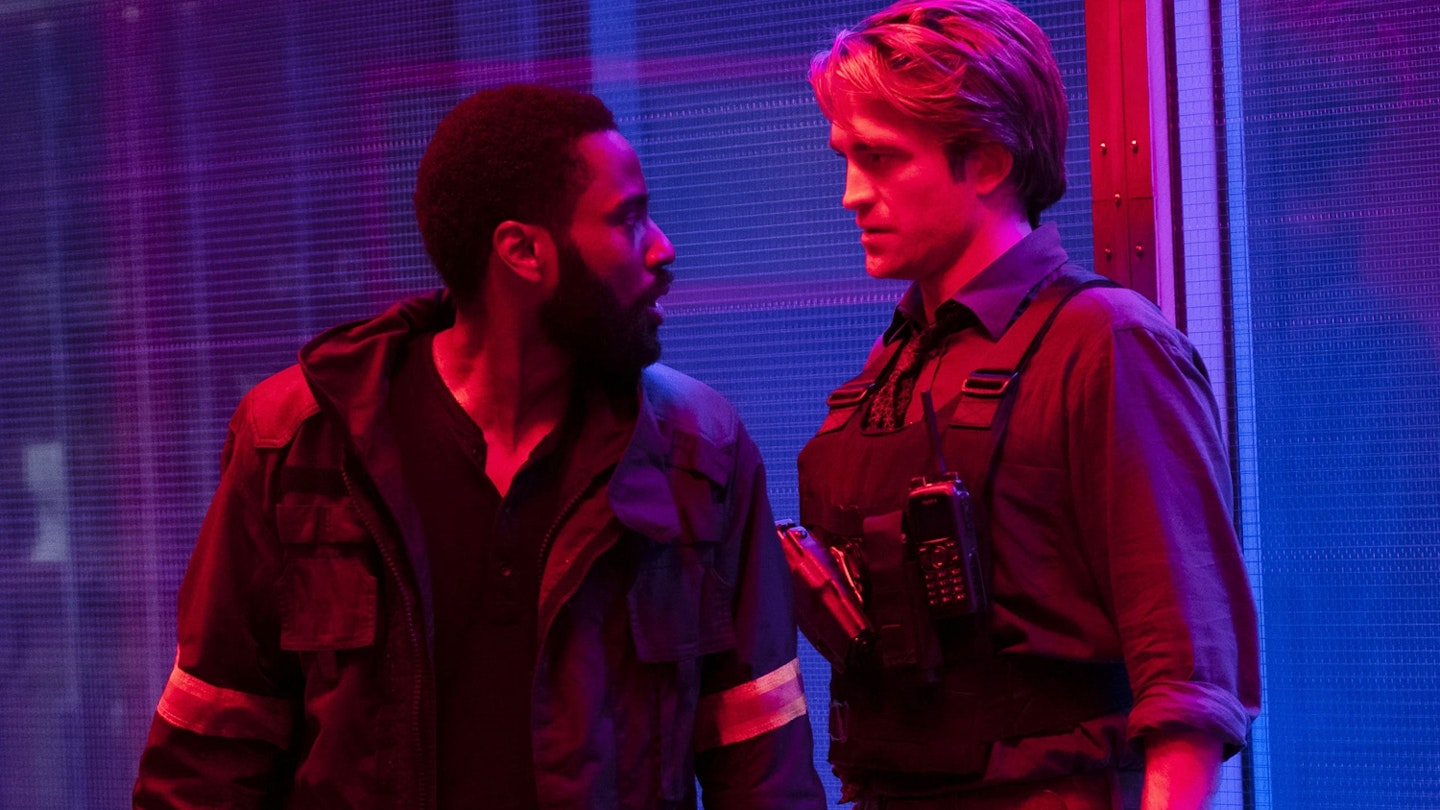Here’s a shocker for you: Tenet, the latest film by Christopher Nolan, is quite confusing. Thrilling and ingenious and action-packed, yes – but also deeply demanding on your grey matter, with all sorts of time-twiddling twists that can make it tricky to decipher who’s moving forward in time, who’s moving backwards in time, and when exactly things are taking place. It’s, fittingly, the most brain-blagging blockbuster since, well, Inception and Interstellar. But fear not – multiple viewings (regular and inverted), many heated arguments, and one giant whiteboard later, Team Empire has it (mostly) figured out. We think.
In the dark about Inversion? Twisted up in a Temporal Pincer Movement with no sense of direction? Feeling as off-grid as a Soviet Closed City? Then step this way, and let us (try to) explain exactly what was going on in Tenet and when, to the best of our understanding.
READ MORE: Interstellar Explained
READ MORE: The Making Of Inception
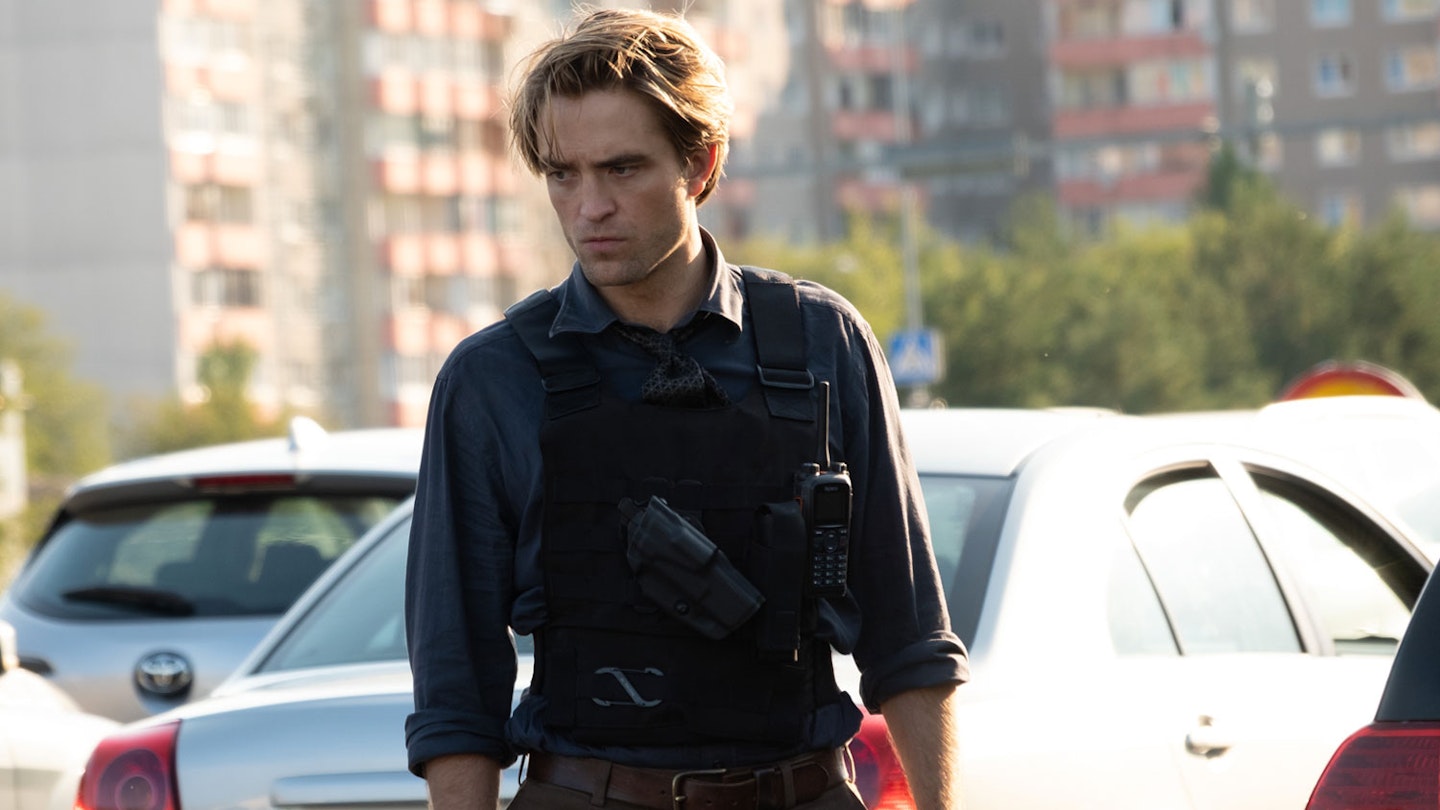
What is Tenet?
It’s a word, and a gesture. And, as The Protagonist (John David Washington) comes to learn, Tenet is the name given to the secret organisation tasked with preventing the temporal apocalypse.
When does Tenet take place?
Today, tomorrow, yesterday, and a number of points in-between. Overall, it’s set (roughly) in the present day, but the start of the film isn’t necessarily the start of the story – The Protagonist’s investigation into Sator (Kenneth Branagh) goes forward a few days, and then the story reverses on itself as the characters ‘invert’ themselves into the past, resulting in a climactic battle that takes place around the same time as the beginning. Ultimately, the film ends on the same day it begins – the film's timeline, just like its title, is a palindrome, you see.
What’s the Sator Square, and what’s that got to do with Tenet?
The Sator Square is a famous palindromic square that dates back about two thousand years, it is the words Rotas, Opera, Tenet, Arepo, Sator and is the same read backwards, forwards, up to down or left to right. All of those words appear in the film: Tenet is the title, Sator the villain, opera the opening sequence, Arepo the forger, and Rotas the name of Sator’s company.

What are Soviet ‘Closed Cities’?
Closed Cities – including Stalask 12, where Branagh’s Sator first made contact with the future as a young man, and where the final battle takes place – date primarily back to the Cold War, and were cities in which sensitive operations were carried out and to which travel was restricted. Essentially invisible, they would have no direct address or transport links, being referred to often by codes referring to adjacent settlements. Within the closed cities would be classified installations (most notably related to the Soviet nuclear programme) and the housing for the people who worked their and their families. Closed cities appeared on no maps and their existence was a closely-guarded secret.
What is a Free Port?
A Free Port is essentially a place where goods can remain outside the normal customs and tax jurisdictions of the country they’re in. Goods arriving at a free port are either taxed lightly or not at all and all goods there are generally regarded as being still outside the country. Needless to say, this makes them an appealing destination for illegal or controlled goods – or, you know, hiding experimental time-reversing technology like an Inversion Turnstile.
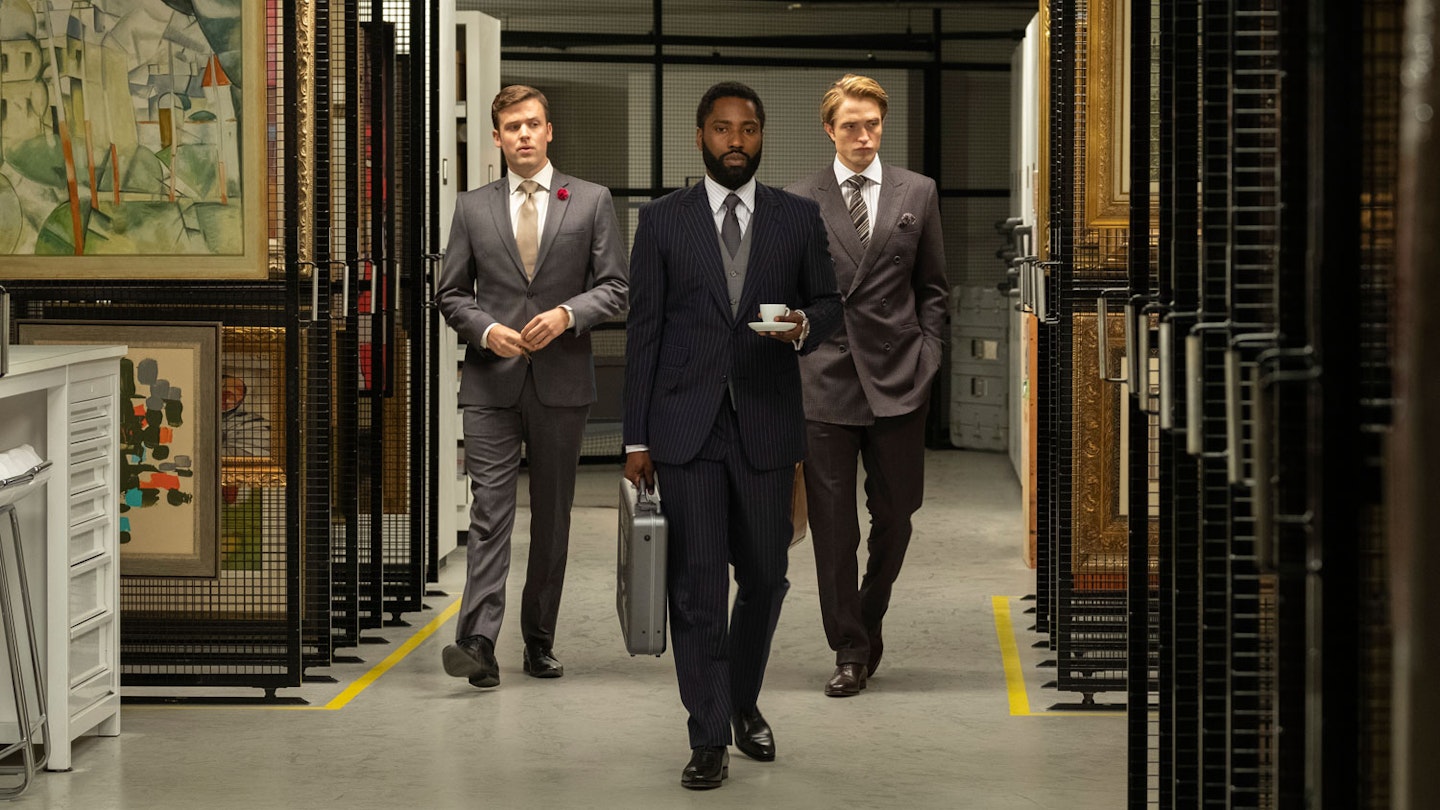
Who is The Protagonist?
Never directly named, The Protagonist is played by John David Washington and begins the film as a CIA agent before being recruited into Tenet, becoming their most important asset. But as the film reaches its climax, it turns out he has a much greater role in the organisation: further on in his own future timeline, The Protagonist becomes the founder of Tenet in the past. Still with us?
What is Inversion?
Inversion is a process whereby an object (or person) has its entropy reversed, essentially flipping its chronology so that from that point on it travels backwards in time instead of forwards. The process is achieved via a Turnstile: a temporal reversal engine that has a distinct entrance and exit, ensuring the object/person doesn't accidentally come into contact with its past/future self and cause the universe to implode. Which would – according to our notes – be bad.
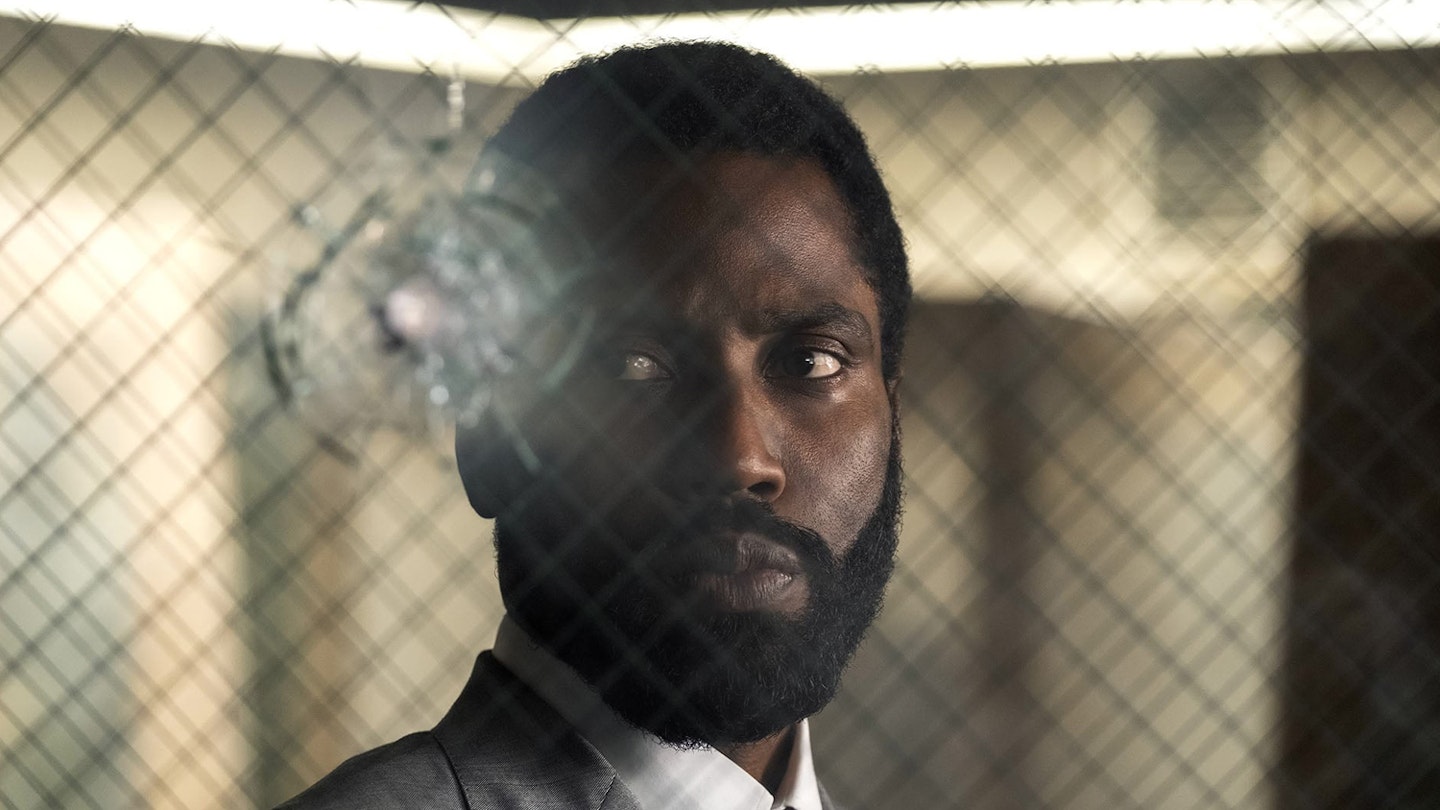
Hang on. During the airport fight, why didn’t the Protagonist implode after touching his future self?
Presumably the physical contact would have to be skin to skin and he was protected by his outfit. Although his outfit needed to have been different too, otherwise the inverted outfit contacting the non-inverted one would have had a similarly disastrous effect.
What’s a Temporal Pincer Movement?
It’s a time-bending tactical technique for missions: you approach it moving forward in time, and then also approach it in reverse moving backwards from the future – each side using the knowledge that the other side gained from having already experienced it. Except, both sides are actually experiencing it simultaneously. It’s… confusing. But it works.
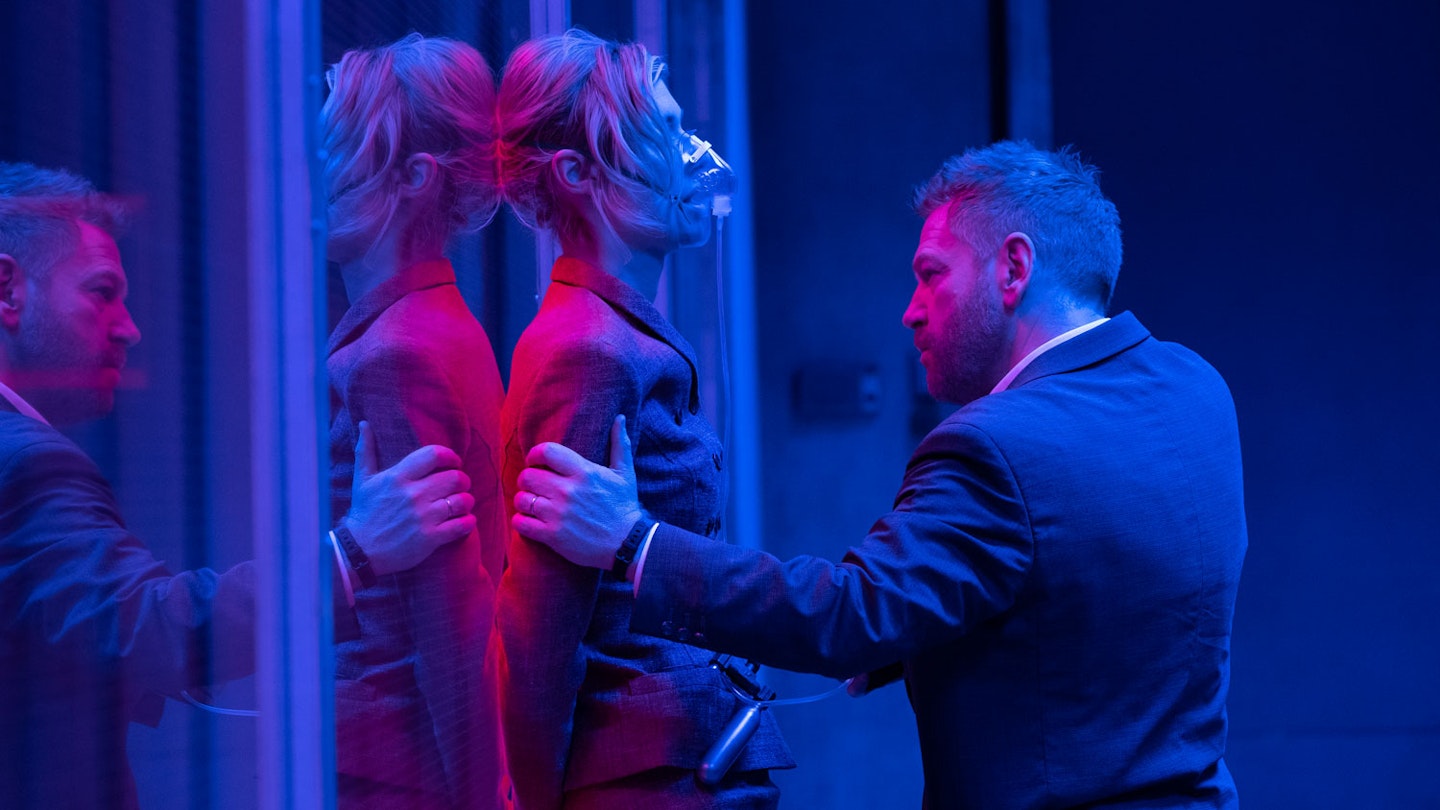
What is the Algorithm?
It’s essentially the film’s MacGuffin. As Priya (Dimple Kapadia) reveals to The Protagonist, The Algorithm is a device from the future that would completely invert the entropy of our world, causing the ‘backwards’ reality to dominate ours and essentially overwrite it. It was created in the future by a scientist who all too quickly realised the error of her ways. To stop the Algorithm being deployed, the scientist split it into nine pieces and inverted them all to hide them in the past. She then killed herself so no one could make her recreate it.
Why does the future want to destroy the past?
Apparently, environmental damage has become so great in the future that the Earth is no longer habitable. The only way for the future to survive, then, is to reverse time and continue their existence in the past. Given that we’re the ones who melted the ice caps and poisoned the air, they’re not all that broken up about killing us in the process.
But won’t overwriting the past cause the future to no longer exist?
And here we start delving into the pitfalls of time travel, in this case the grandfather paradox and the problem of causality. Tenet seems to adhere to a form of time travel called the ontological paradox, where you can alter the past but only because it’s already been altered, because you always altered it and are thus playing out your part in the timeline, completing the causal loop. It’s what Hermione did with the Time-Turner in Harry Potter And The Prisoner Of Azkaban: yes, she went back in time, but she was always in two places at once and so she fulfilled what would always have been the future and didn’t (as happens in the likes of The Terminator and Back To The Future) change the timeline, causing a different future to come about.

Does this involve parallel worlds?
No. The many worlds theory simply states that every conceivable outcome plays out in infinite alternate realities, so any change you make will create a separate reality and have no bearing on the future that was once your past. Tenet doesn’t use that model.
Hang on. But surely erasing the whole of the past would squash this whole causal loop thing you’re talking about?
It would, which is where Tenet deviates from that model and indeed physics as a whole. The simple answer to this is simply ‘because the Algorithm’. In the same way that Avengers: Endgame gets away with quite a lot by saying, ‘because Infinity Stones’. The Algorithm, in reversing the entropy of our entire reality, breaks our understanding of traditional causality and timelines.
What was Sator’s master plan?
Having been recruited and paid (in inverted gold) by contacts in the future, Sator had gathered eight of the nine pieces of the Algorithm before the film begins. Now, Sator’s goal is to acquire the final segment and activate the device. Since he is dying of pancreatic cancer, he plans to activate it via a dead man’s switch (his Fitbit, essentially), meaning that when he dies, all of our forwards reality dies with him. It’s a final ‘fuck you’ to the world and is all rather overly dramatic and Blofeldian.

What on Earth was going on during the car chase in Tallinn?
After they steal the ‘plutonium’, which in reality is a piece of the Algorithm, Neil (Robert Pattinson) and The Protagonist are ambushed by Sator, who pursues them in an inverted car. Sator threatens Kat (Elizabeth Debicki) and demands the Algorithm. A second inverted car un-crashes and pulls alongside them containing (unbeknownst to the audience at that point) the future Protagonist from a few hours hence. The present Protagonist gives Sator an empty case and throws the algorithm into the new car with his future self.
Okay, but what on Earth was going on during that fight at the end?
Having located the site where Sator’s forces are assembling the Algorithm at Stalsk 12, team Tenet is split into two groups: the red team attacking the site, and the blue team inverting from just after the conflict and attacking the same site from the future while travelling backwards. Yep, it’s a Temporal Pincer Movement! Thus you have inverted and un-inverted Tenet soldiers fighting against Sator’s men, while The Protagonist and Ives (played by a near-unrecognisable Aaron Taylor-Johnson), both on the red team, head down into the bunker to nab the Algorithm. To complicate matters, Neil starts on the blue team, but un-inverts partway through the mission via a Turnstile at the site so that he can rescue Ives and The Protagonist from the bunker explosion. Not only that, but Future Neil gets involved as well – he re-inverts after the battle and heads back to the bunker to ensure the mission is a success, being the ‘dead’ body behind the locked gate that appears to spring to life just in time to unlock the gate and save The Protagonist and Ives.
Was Neil part of Tenet all along?
Yes. As Neil confirms at the end of the movie, he’s been working for Future Protagonist from the start. Indeed, the two are good friends before the film begins, having met in Neil’s past but The Protagonist’s future. It’s hinted at when Neil knows The Protagonist’s drink order in Mumbai – but the reason why he knew that isn’t made clear until the film’s final moments.
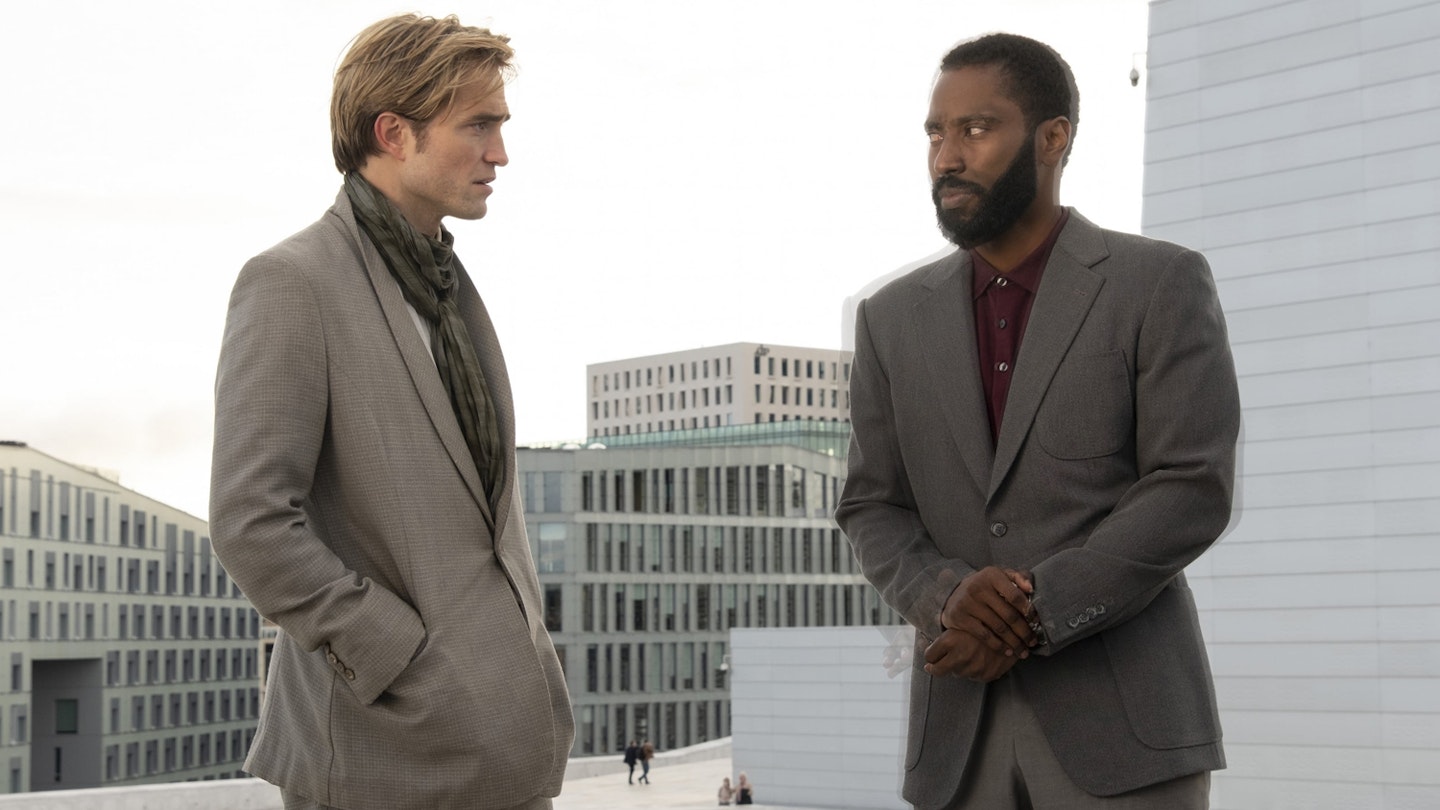
When did the Protagonist meet Neil?
After the events of the film, The Protagonist clearly spends a lot of time inverted and travels back to the past in order to found and set Tenet in motion (completing the causal loop). At some point long before the film starts, he meets and recruits a younger Neil, setting him in motion to later meet and assist his younger self.
Who saved The Protagonist at The Opera?
That was an inverted Neil — something we only realise at the end of the film when we recognise the medallion on his backpack (also seen on the ‘dead’ body behind the locked gate and on Neil at the end of the film). When exactly Neil fits in this little jaunt to the past is unclear, but we can assume it happens before he meets up with The Protagonist for the ‘first’ time in Mumbai.
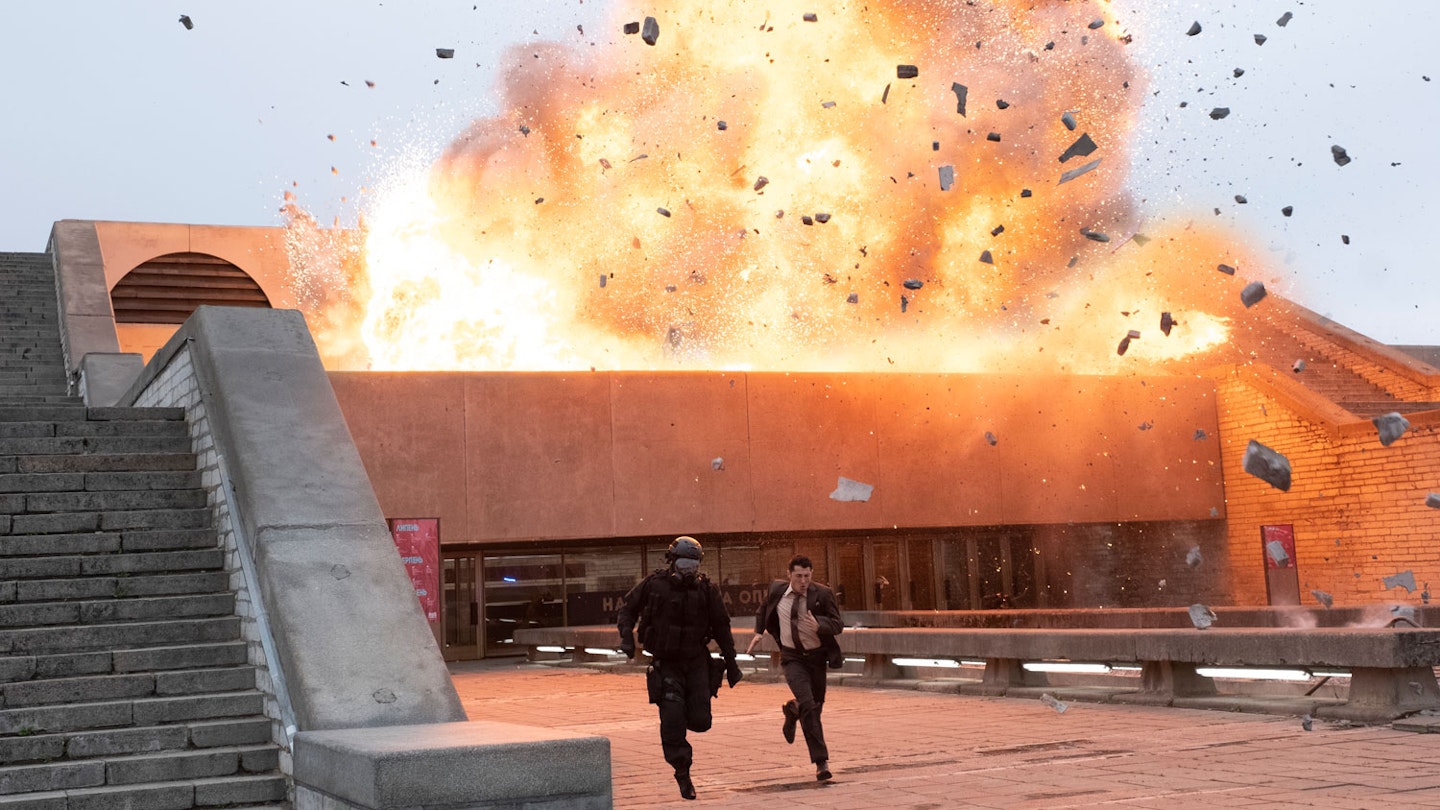
So did Neil die at the end?
Yes. Having inverted and then un-inverted during the final battle, Neil’s final task is to invert himself once again and go back in to the bunker so that he can unlock the gate and die, saving The Protagonist and Ives as he does so. He has no choice in the matter – he’s already done it, and is simply playing out events that have already occurred.
Is Neil actually Max?
No! Although this theory seems to have gained some traction (even within the Empire office!) due to the shot of Max while Neil is talking. However the timings don’t really add up and Max would have to have spent half his life inverted to marry up the ages. Besides, Neil shows little to no emotion or recognition when Kat is shot and has no sentiment whatsoever about Sator’s demise, which would be odd if they were his parents.
Tenet is out now in UK cinemas.
